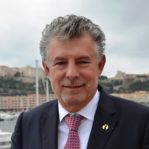Turning Point for peace: Learning from the past building the future
Peace is not just the absence of war. We are constantly reminded of this, notably by recent tragic events in Egypt, Tunisia and France. Whereas conflict historically occurred more between states with, to a certain degree, rules of war and a possibility for dialogue through diplomatic channels, we are now witnessing a major increase in inter-state conflicts combined with unpredictable isolated acts of violence. As fear and grief grow, we should sound the alarm and realize that there is a need to tackle the underlying causes of the problems, rather than just focus on the act itself. As conflict transformation pioneer John Paul Lederach once said, “Acts can be situated not as an isolated event but as part of a cycle with history of actions, reactions, and counteractions. Only when understood in the context of a broader pattern, which in the short term can be very difficult to visualize, is it possible to see that how we choose to respond has consequences and implications in terms of a wider, historic pattern. Through our response we choose to transcend or enter and sustain the cycle of violence.”
To a certain extent, what we see and fear are the visible acts of violence or the tip of the iceberg but underlying this are a mixture of tensions, misunderstandings, feeling of exclusion, marginalization and general inadequacy with current norms. There are few statistics about this invisible unrest; it is hard to measure. The media reports only on the visible aspects, but as a community we need to start acting further to foster dialogue and develop competencies to prevent conflicts from escalating. Peace is a dynamic, non-violent conflict transformation process that can be experienced, learned and transmitted. For this reason, education is key: we need tools to reach out to and with youth, but not only youth.
Much more than a game, sport can be an active tool to transfer peace education and foster dialogue in a way that transcends political, social, racial or other differences that are often at the heart of conflicts in this world. Because participating in sport entails taking on an active role, it generates the notion of engagement, development of the self, interaction and exchange, and it builds the understanding that one needs to train in order to improve. Together, these constitute an undeniably strong basis for peace building. Peace can be learnt but it is a long-term process. We have to learn to dialogue, to communicate and listen to the other with respect but also have the other respect us and our needs. Peace and Sport works in diplomatic circles and in sensitive areas to advance peace but is also present on the ground to show and experience the reality that this tool can offer. However, one must not think that this only applies to countries of the south: last year, we launched a program in France with ANRAS (National Association for Research and Solidarity Action) to show that sport, as a tool for peace, is needed everywhere. Today, more and more people are choosing to be an actor for change and acknowledge that a better world is possible. Peace is increasingly being seen as a need for survival or as a real investment for our communities rather than a cost. We must continue in this direction.
For this reason, this year, I will dedicate a space during the 8th edition of the Peace and Sport International Forum to the major challenges in this growing global identity crisis of the coming decade and how geopolitical spheres are turning to explore how sport can and should tackle issues of migration, radicalization and extremism. I hereby invite you to join us to nourish this important debate, to learn from the recent tragedies and build a better future together.

